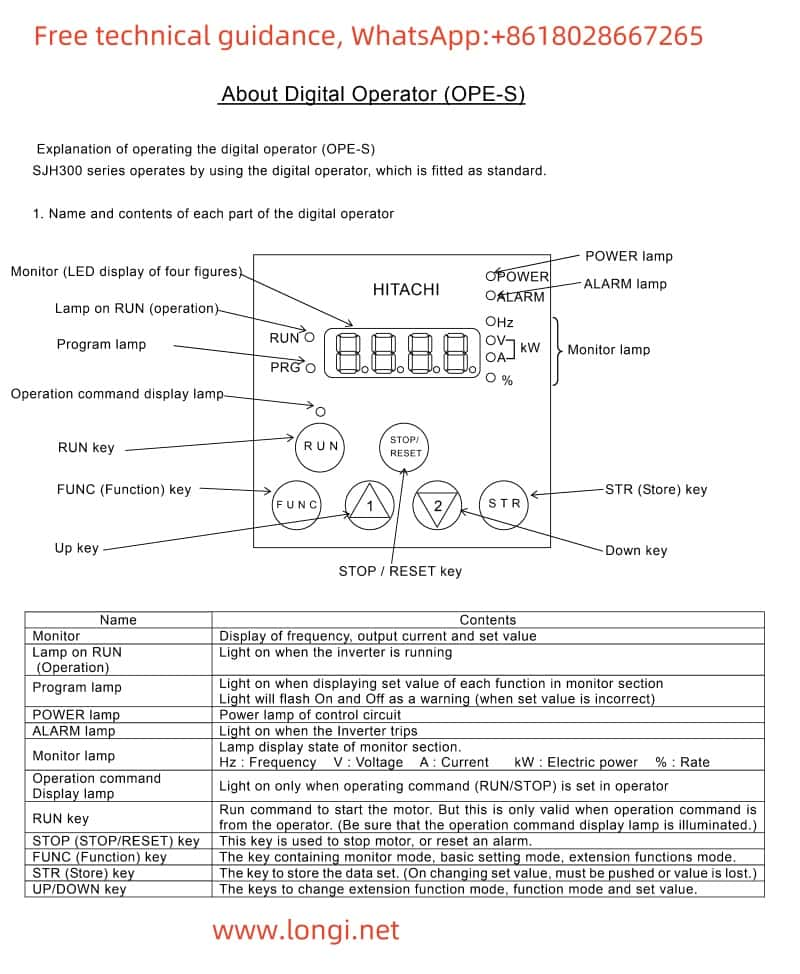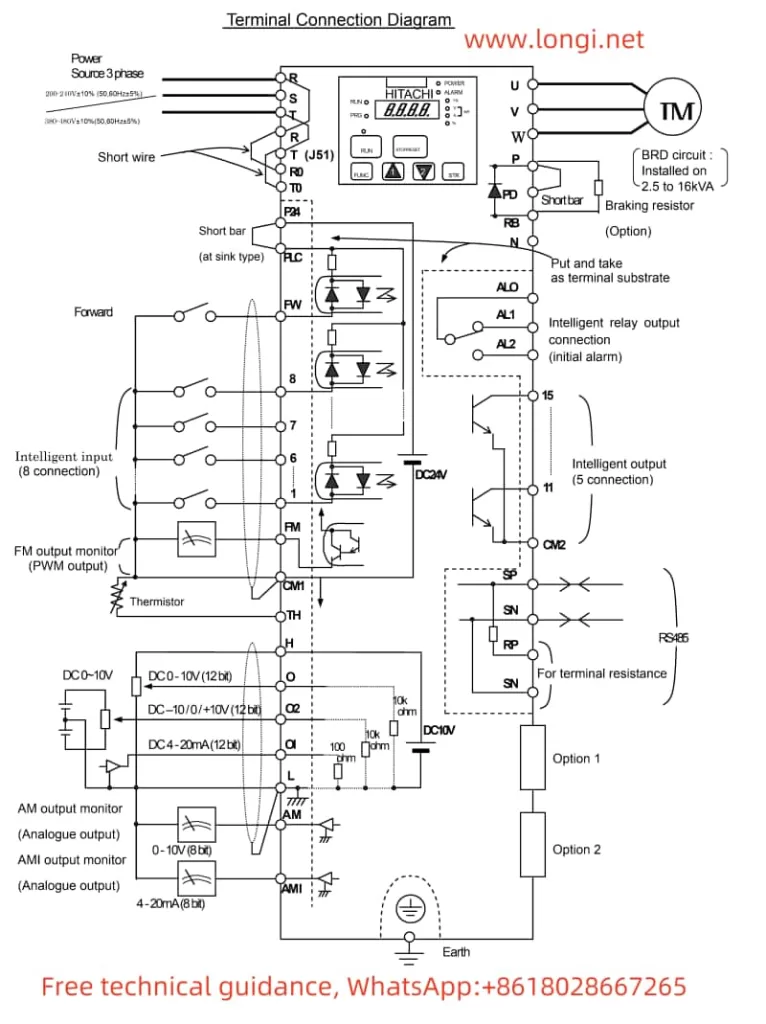I. Introduction to Operation Panel Functions, Factory Default Reset, and Password Management
The Hitachi Inverter SJH300 series features an intuitive operation panel that integrates various functions for easy configuration and monitoring. The operation panel includes:

- Operation Panel Function Introduction:
- Digital Operator (OPE-S): The standard-equipped digital operator provides a user-friendly interface for setting parameters, monitoring operating conditions, and controlling the inverter. Key functions include setting output frequency, selecting operation direction, and initiating start/stop commands.
- Monitor Modes: The panel displays various monitor modes, such as output frequency, output current, operation direction, and alarm status, to provide real-time feedback on the inverter’s performance.
- Resetting to Factory Defaults:
- To restore the inverter to its factory default settings, you need to navigate to the appropriate parameter (typically
b084) in the function mode and set it to01for data initialization or02for both trip history clear and data initialization. This action resets all parameters to their default values, effectively restoring the inverter to its out-of-the-box state.
- To restore the inverter to its factory default settings, you need to navigate to the appropriate parameter (typically
- Password Management:
- Setting a Password: To set a password for parameter access, use the
C070parameter to select the data command mode (e.g.,03for RS485 communication). Then, configure the relevant communication parameters (such as transmission speed, code, bit, and parity) to establish a secure communication channel. - Eliminating a Password: To remove the password, simply reset the
C070parameter to its default value (02for operator mode), which disables password protection and allows unrestricted access to all parameters.
- Setting a Password: To set a password for parameter access, use the

II. Terminal Start/Stop, Forward/Reverse Control, and External Potentiometer Speed Adjustment
The Hitachi Inverter SJH300 series offers flexible control options, including terminal start/stop, forward/reverse control, and external potentiometer speed adjustment. Here’s how to configure these features:
- Terminal Start/Stop and Forward/Reverse Control:
- Wiring: Connect the start (FW) and stop (RV) terminals to the appropriate control signals. For forward/reverse control, you may need to assign specific intelligent input terminals (e.g., terminals 7, 8 for forward/reverse commands).
- Parameter Setting:
- Set
A002to01to select terminal operation command. - Configure
F004to select the desired operation direction (00for forward,01for reverse). - If using intelligent input terminals for forward/reverse control, assign the corresponding terminals (e.g., terminals 7, 8) and set the appropriate function codes (C001-C008).
- Set
- External Potentiometer Speed Adjustment:
- Wiring: Connect the external potentiometer (typically a 10kΩ linear potentiometer) across the O-L (0-10V) terminals. Ensure proper grounding and shielding to avoid noise interference.
- Parameter Setting:
- Set
A001to01to select terminal frequency command. - Configure
A011(O start) andA012(O end) to define the minimum and maximum output frequencies corresponding to the potentiometer’s minimum and maximum resistance values. - Adjust
A013(O start rate) andA014(O end rate) if linear adjustment is not achieved directly with the potentiometer.
- Set
By following these steps, you can effectively configure the Hitachi Inverter SJH300 series for terminal-based start/stop and forward/reverse control, as well as external potentiometer speed adjustment, to suit your specific application requirements.
